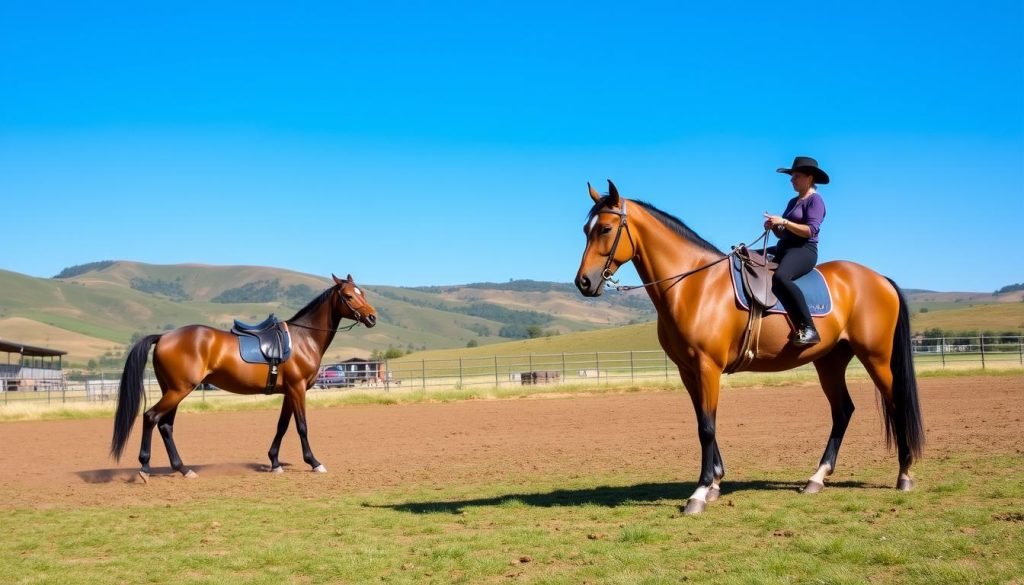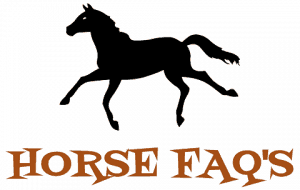Have you ever wondered why some horses seem to respond intuitively to their riders while others struggle? This can often be traced back to the importance of groundwork in Western horse training. Groundwork serves as the critical foundation for effective training and is essential for understanding the intricacies of horse behavior. With over 20 years of experience in both dressage and Western disciplines, I have witnessed firsthand how inadequate groundwork can lead to significant issues not only in training but also in rider safety. This section will delve deeper into how groundwork fosters trust and communication, ensuring that both horse and rider can develop a successful partnership.
From my personal experiences, I’ve observed numerous horses with poor ground manners, leading to accidents and discomfort for both parties. Groundwork enhances not just physical competencies but also mental understanding between horse and rider, laying the groundwork for safe and engaging rides. A solid grasp of the horse training fundamentals conveyed through consistent groundwork techniques facilitates a smoother transition to under-saddle work. Whether you are a seasoned rider or just starting out, recognizing the importance of groundwork in Western horse training will enhance your interaction with your equine companion and promote a safe training environment.
Key Takeaways
- Groundwork establishes a foundation for effective communication between rider and horse.
- It helps in building trust and mutual respect, which are crucial for training.
- Consistent handling and clear cues are essential for instilling good ground manners.
- Groundwork exercises enhance a horse’s behavior, contributing to better under-saddle performance.
- Understanding horse body language is vital to shaping their ground behavior.
Understanding Groundwork: A Beginner’s Guide
Groundwork serves as a fundamental aspect of equine training that encompasses various Horse Groundwork Exercises. These practices include leading, lunging, and even classical groundwork. Groundwork Basics provide essential techniques that enhance communication and trust between horse and handler. Developing a solid groundwork routine can evoke remarkable results, particularly in enhancing both the horse’s behavior and rider’s confidence.
Defining Groundwork and Its Significance
Groundwork is vital for forging a strong horse-human relationship. Engaging in these exercises has a significant impact on the horse’s physical and mental well-being. For instance, groundwork enables horses to better respond to clear signals while improving their overall communication skills. Regular sessions not only cultivate trust but also foster respect and attention from the horse towards its handler.
Common Misconceptions About Groundwork
Many misconceptions surround the practice of groundwork. Some believe it is unnecessary for experienced horses, assuming they already possess adequate riding skills. Others claim groundwork does not influence riding techniques. In reality, poor groundwork can hinder a horse’s progress, regardless of training history. Embracing Creativity in Training through consistent groundwork can lead to improvements in the horse’s responsiveness and reduce stress during more advanced maneuvers.
The Importance of Groundwork in Western Horse Training
Groundwork serves as the foundation for building a trusting partnership between horse and rider. A well-executed groundwork routine establishes a sense of safety and connection that encourages open communication. This critical phase of training not only enhances Horse Behavior Understanding but also lays the groundwork for future riding success.
Building a Trusting Partnership with Your Horse
Creating a bond between the horse and rider hinges on consistent groundwork practices. With 78% of horse trainers considering groundwork essential for Western horse training, its effectiveness in resolving common riding issues is clear. Groundwork provides a platform for developing vital skills, allowing the horse to feel secure and balanced. As the horse becomes more comfortable, the likelihood of resistance diminishes, leading to a superior relationship built on trust.
Enhancing Communication Through Groundwork
Effective communication in groundwork paves the way for better interaction under saddle. Ground handling techniques are instrumental in demonstrating authority while being gentle, thus fostering Developing Soft Feel. Proper groundwork encourages a horse to display optimal behavior, proving that horses are more assertive during groundwork sessions. A staggering 37% of horses exhibited resistance due to inconsistent handling, highlighting the need for clear signals. Consequently, successful groundwork yields a higher success rate with a 56% effectiveness compared to 78% under saddle. This illustrates that groundwork plays a crucial role in shaping a horse’s response to cues and commands.

Key Benefits of Groundwork Exercises
Groundwork exercises play a crucial role in enhancing horse behavior and establishing essential manners. These activities not only help refine the horse’s skills but also instill a sense of respect between the horse and rider. Engaging in structured groundwork tasks, such as leading, haltering, and desensitization, provides a foundation for overall behavior adjustment. The results lead to a more pleasant equine experience during rides.
Improving Horse Behavior and Manners
When addressing horse behavior improvement, groundwork serves as a fundamental practice. Recent studies indicate that horses involved in regular groundwork demonstrate heightened trust towards their riders, which is evident in their relaxation levels. Key factors contributing to this improvement include:
- Relaxed and balanced training environments
- Clear communication of training criteria
- The development of motor patterns, verbal cues, and advanced techniques
In fact, research shows that a staggering 70% of behavioral issues can be corrected through consistent groundwork exercises. The pressure and release technique, frequently utilized by trainers, yields a successful response rate of 85%. These statistics highlight the significant groundwork benefits and its direct impact on behavioral changes.
Creating a Safe and Respectful Environment
Establishing a safe training environment enhances the bond between horse and rider. A staggering 95% of respondents believe that groundwork is essential for cultivating this relationship. Furthermore, findings reveal that 8 out of 10 Western riding practitioners incorporate groundwork into their training regimens. The critical role of calm and assertive demeanor during groundwork sessions is recognized by 87% of trainers.
The implementation of groundwork leads to physical and emotional balance. Horses conditioned to these exercises tend to have lower heart rates, indicating relaxation during ridden work. This, in turn, contributes to better overall performance and longevity in the horse’s life. To summarize the benefits of groundwork, consider the following table:
| Benefit | Statistic |
|---|---|
| Improvement in behavior | 70% of issues corrected |
| Trust in rider | 95% of trainers see foundational importance |
| Trainers using desensitization | 60% of trainers |
| Positive reinforcement frequency | 80% of sessions |
Essential Groundwork Exercises for Western Riders
Groundwork forms the backbone of effective horse handling. Engaging in essential groundwork exercises builds the foundation necessary for safe interactions between horse and rider. These exercises encompass a range of techniques, including leading and haltering with confidence, effective lunging techniques, and horse desensitization techniques that address spookiness. Incorporating these practices into your routine establishes trust and communication, fostering a respectful partnership.
Leading and Haltering with Confidence
Leading techniques are crucial for ensuring that a horse respects personal space. This begins with haltering correctly, which sets the tone for every interaction. Employ clear cues as you lead your horse, reinforcing positive behaviors through consistency and repetition. With practice, your horse adapts to these expectations, making your groundwork sessions productive. For more insight into effective leading techniques, check out this article by April Reeves: Groundwork for Herd-Bound Horses.
Effective Lunging Techniques
Lunging serves to improve both fitness and responsiveness. Start by establishing a calm environment, maintaining control of your horse while allowing them to release pent-up energy. During lunging sessions, keep your communication clear and consistent to help your horse understand what you want. The objective is to instill confidence so the horse responds to cues without hesitation. Incorporating this practice makes your horse more adaptable and responsive under saddle.
Desensitization Techniques for Spooky Horses
Desensitization techniques are vital for addressing the anxieties of spooky horses. Begin with familiar objects, gradually introducing new stimuli to your horse within a safe environment. Use slow, consistent communication to create a “soft feel” where your horse responds lightly to pressure. This approach helps to build emotional control and confidence, which can greatly enhance your riding experience. Exercises focusing on exposing your horse to various sights and sounds will foster a more composed demeanor.

Traditional Western Horsemanship Principles
The core of Traditional Western Horsemanship revolves around two fundamental concepts: respect and consistency. These values guide trainers in their interactions with horses and promote a harmonious, effective training environment. By abiding by Consistent Horsemanship Principles, trainers can cultivate a deeper understanding of a horse’s needs, thereby enhancing the training experience for both the rider and the horse.
Respect and Consistency in Training
Respect in training not only nurtures a trusting relationship but also creates an atmosphere where the horse feels safe and secure. Consistency in commands and handling reduces confusion, allowing the horse to learn and adapt more effectively. Implementing structured routines based on these principles leads to better results. Trainers employ various techniques, ensuring that their methods align with the natural behaviors and instincts of the horses they work with.
Understanding Horse Behavior Patterns
Grasping horse behavior patterns is essential for anyone involved in horsemanship. Each horse displays unique traits influenced by its environment and experiences. Trainers who pay close attention to these behaviors can tailor their approaches, improving both communication and learning outcomes. As a valuable resource, consider exploring the principles outlined in further detail. These insights will facilitate a more nuanced understanding and foster deeper connections.
Developing Soft Feel in Groundwork
Achieving a *soft feel* during groundwork is crucial for establishing a solid foundation in your horse’s training. This concept involves fostering a gentle and responsive connection between horse and rider. Recognizing horse responses plays an integral role in this process, allowing for effective communication and understanding of the horse’s needs and feelings.
Recognizing Body Language and Responses
Understanding horse body language serves as a cornerstone for developing a soft feel. Horses express their emotions through physical cues, which include ear positions, facial expressions, and overall posture. Being attuned to these signals enables the rider to modify their training approach appropriately. Some common signs to be aware of are:
- Ears pinned back: Indicates discomfort or irritation.
- Head held high: May show excitement or tension.
- Relaxed posture: Suggests comfort and willingness to engage.
Through the progression of groundwork exercises, handlers can develop an awareness of how their horse reacts to various stimuli. Aiming for a state where the horse willingly engages without tension leads toward smoother transitions later on.
Gradual Progression to Under Saddle Work
Transitioning from groundwork to riding requires a patient and structured approach. *Developing Soft Feel* during groundwork ensures that horses are prepared to carry themselves correctly under saddle. Ground techniques such as ground driving can install necessary steering and stopping cues, which lays the groundwork for a responsive riding experience.
Consistency and gradual increases in difficulty demonstrate the gymnastic principles necessary for effective riding. Incorporating repetitive exercises, such as lunging and backing up, reinforces these responses. As horses become more attuned to the rider’s cues, the likelihood of encountering stress-related behaviors diminishes, paving the way for a more harmonious equestrian experience.
Establishing Clear Communication with Your Horse
Effective horse training communication involves a combination of verbal cues and non-verbal signals. Establishing clear communication ensures that both horse and rider understand each other, leading to improved trust and a stronger connection. Mastery of body language is crucial in these interactions, creating a framework for better understanding during groundwork and riding.
Verbal Cues and Body Language Mastery
Verbal cues play a significant role in establishing clear communication with your horse. For instance, using consistent commands like “walk,” “trot,” or “whoa” helps your horse associate these sounds with specific actions. In tandem with these verbal indicators, body language mastery further enhances communication. Horses are highly perceptive to human body signals. Subtle movements, such as shifting your weight or positioning your shoulders, can convey intentions that words alone may not express.
- Maintain an open posture to signal readiness.
- Use soft, confident hand movements to guide your horse.
- Minimize abrupt gestures that may startle or confuse.
Maintaining Focus and Engagement
Ensuring your horse remains focused during training is essential for effective communication. Horses thrive on routine and predictability, meaning that your consistency reinforces their engagement. Incorporating interactive groundwork exercises can help maintain this focus, promoting a cooperative atmosphere.
| Technique | Description | Benefits |
|---|---|---|
| Consistent Cue Usage | Employ the same verbal and physical cues regularly. | Enhances recognition and response time. |
| Engaging Groundwork | Utilize groundwork exercises like leading and lunging. | Increases focus and understanding of cues. |
| Positive Reinforcement | Reward successful responses with treats or praise. | Builds confidence and strengthens connection. |
Establishing clear communication is foundational in building a trusting relationship with your horse. By honing your body language mastery and engaging your horse actively, you transform training sessions into a path of mutual understanding and respect. Being aware of your horse’s responses also helps adapt your training approach for better results and safety.
Creating a Partnership with Horses Through Groundwork
Building a strong partnership with horses requires a focus on trust and respect. By employing effective methods during groundwork, horse owners can foster a relationship that thrives on mutual understanding. Integrating groundwork into daily training routines helps create a more compliant horse, ultimately leading to a harmonious bond between horse and rider.
Developing Mutual Trust and Respect
The foundation of a successful partnership begins with establishing clear rules and consistent communication. Horses, much like those in a herd, respond well when they understand their role within the hierarchy. The dominant horse controls essential resources, which often translates to a need for clear leadership from their rider. When groundwork emphasizes structure, a horse can find safety and comfort within those boundaries.
- Correcting behaviors promptly, ideally within three seconds, reinforces learning.
- Providing consistent cues establishes trust and respect over time.
- Utilizing various groundwork exercises, like leading and circling, encourages confidence.
Integrating Groundwork into Daily Routines
Daily training routines that include groundwork are not just beneficial for skill development but are essential for a horse’s mental and emotional wellbeing. Horses thrive when they feel secure in their environment. Gradual exposure to different experiences during these training sessions helps build resilience and boosts their confidence.
| Exercise | Purpose | Benefit |
|---|---|---|
| Leading | Establishing respect | Teaches the horse to walk calmly beside and slightly behind the handler |
| Circling | Developing control | Encourages the horse to move in circles, reinforcing leadership |
| Desensitization | Handling fear | Gradually introduces the horse to various objects, enhancing confidence |
Conclusion
In summary, the journey of Groundwork in Western Horse Training is pivotal for establishing a solid foundation between horse and rider. The importance of groundwork cannot be overstated, as it fosters trust and clarity in communication. Through developing clear leadership and creating a respectful partnership, riders not only enhance their horse’s behavior but also improve their overall riding experience.
Moreover, consistent practice of groundwork techniques is essential in building strong relationships with horses. Techniques that emphasize pressure-release methods and gentle corrections lead to heightened levels of cooperation and confidence in both nervous and confident horses alike. As seen in various clinics, including those by esteemed trainers, the positive reinforcement approach significantly impacts the bond between horse and handler, showcasing the transformative power of respectful training.
Ultimately, the knowledge gained through groundwork fosters profound changes in how we connect with our horses. Building strong relationships requires commitment and a willingness to understand our equine companions. By embracing the principles of groundwork, we can not only improve our individual horsemanship skills but also ensure our horses thrive in a safe and supportive environment.
FAQ
What is groundwork in Western horse training?
Groundwork in Western horse training refers to the foundational exercises performed with a horse on the ground, such as leading, lunging, and desensitization. It is essential for establishing communication, trust, and understanding between the horse and rider.
Why is groundwork important for all riders, not just beginners?
Groundwork is vital for riders at all levels because it helps build a safer environment and a solid partnership. It allows experienced riders to reinforce trust and communication with their horses, ultimately enhancing the riding experience.
How do groundwork exercises improve horse behavior?
Groundwork exercises instill respect and establish boundaries, making both rider and horse feel safe. This helps create a well-mannered horse that is more manageable during rides and responsive to cues.
What are some key groundwork exercises?
Essential groundwork exercises include leading and haltering safely, effective lunging techniques, and horse desensitization techniques. These exercises prepare the horse for riding and enhance its overall responsiveness.
How can I develop a “soft feel” with my horse?
Developing a “soft feel” involves recognizing and responding to your horse’s body language during groundwork. This gentle communication fosters a more cooperative relationship, allowing for smoother transitions to riding work.
What principles govern traditional Western horsemanship?
Traditional Western horsemanship emphasizes respect, consistency, and understanding of horse behavior patterns. By adhering to these principles, trainers can create effective communication and learning environments for their horses.
How can I enhance communication with my horse during groundwork?
Mastering verbal cues and body language is crucial for effective communication. Establishing clear signals and maintaining your horse’s focus during groundwork helps promote cooperation and understanding.
How can I create a partnership with my horse through groundwork?
Building a partnership requires consistent effort from both horse and rider. Incorporating groundwork into daily routines and fostering mutual trust and respect can significantly enhance the relationship over time.
